The MG HS Plus EV is the most affordable plug-in-hybrid electric vehicle (PHEV) in Australia, already achieving price parity with its combustion engine only rivals. But should you opt for the ‘all or nothing approach’ and just consider a pure battery-electric vehicle (BEV) instead?
Admittedly, I’ve been lukewarm about PHEVs. But after spending time with MG’s five-seater medium SUV, my perspective has been broadened. A PHEV has a strong case over an internal combustion engine (ICE) only or hybrid electric vehicle (HEV), and potentially a BEV in the right circumstances. On the other hand, I would also strongly recommend against a PHEV in some cases as well, depending on the buyer.
zecar rating
Good points
- Best value plug-in-hybrid car in the market
- Premium package at an affordable price point
- Rich in technology and features
Could be better
- Sluggish infotainment and driver assist systems
- Electric range is shorter than we'd like
- PHEVs can be as expensive to operate as petrol cars
The HS Plus EV is available in two model grades which both house the same drivetrain and battery package. Our test unit is the flagship HS Plus EV Essence, priced from $51,690 drive-away and is painted in Sterling Silver Metallic (no cost extra).
📖 Learn more about the differences between BEV, PHEV and HEV
🏷 Full pricing, specifications and features of the 2022 HS Plus EV.
Design
The HS Plus EV’s proportions are of a typical medium-sized SUV. With dimensions of 4680mm length, 1800mm width and only 175mm of ground clearance, it’s about middle of the pack when compared to its petrol-powered peers like the Mazda CX-5, Honda CR-V and Toyota RAV4.
Overall, the HS Plus EV is a pleasant looking car. There is nothing particularly standout about the design and doesn’t scream ‘look at me’. The rear reminds me of the first-generation Audi Q5, which is a positive in my view.
Our test car came in Sterling Silver Metallic and seemed to do a good job of hiding grime as it was still sparkling after being with us for the week.
The overall fit and finish of the body is well-built with no noticeable panel gaps.
The interior is where the MG HS Plus EV Essence shines more.
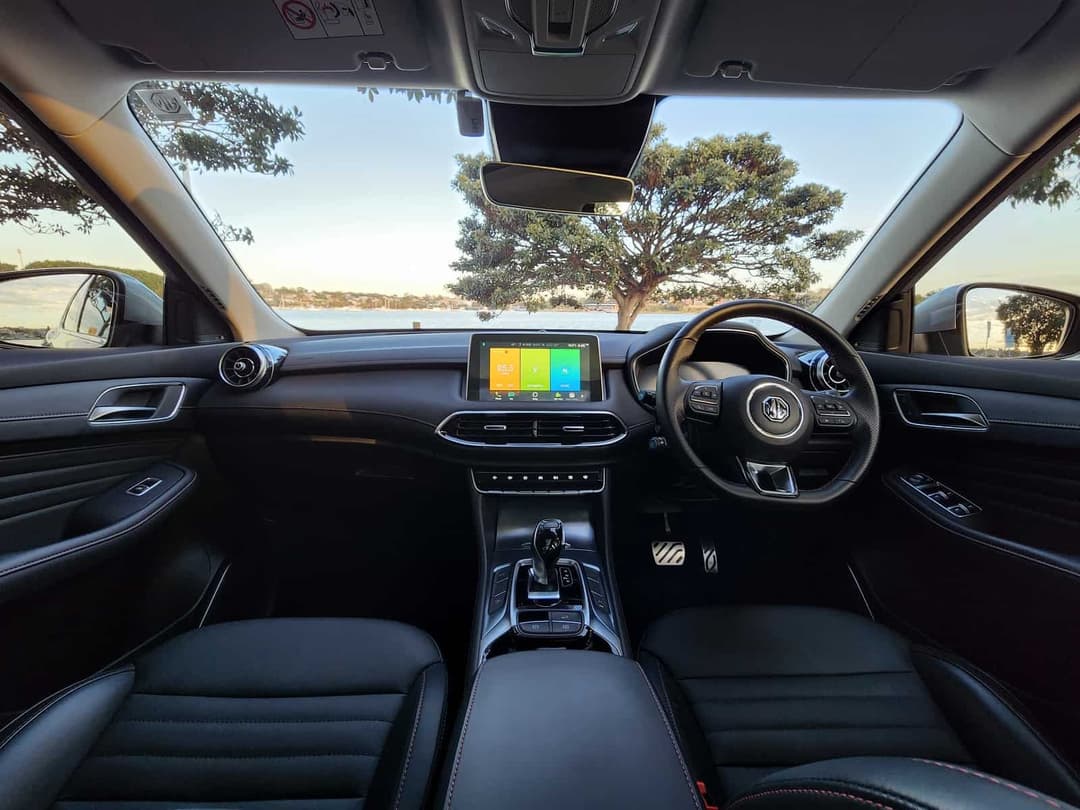
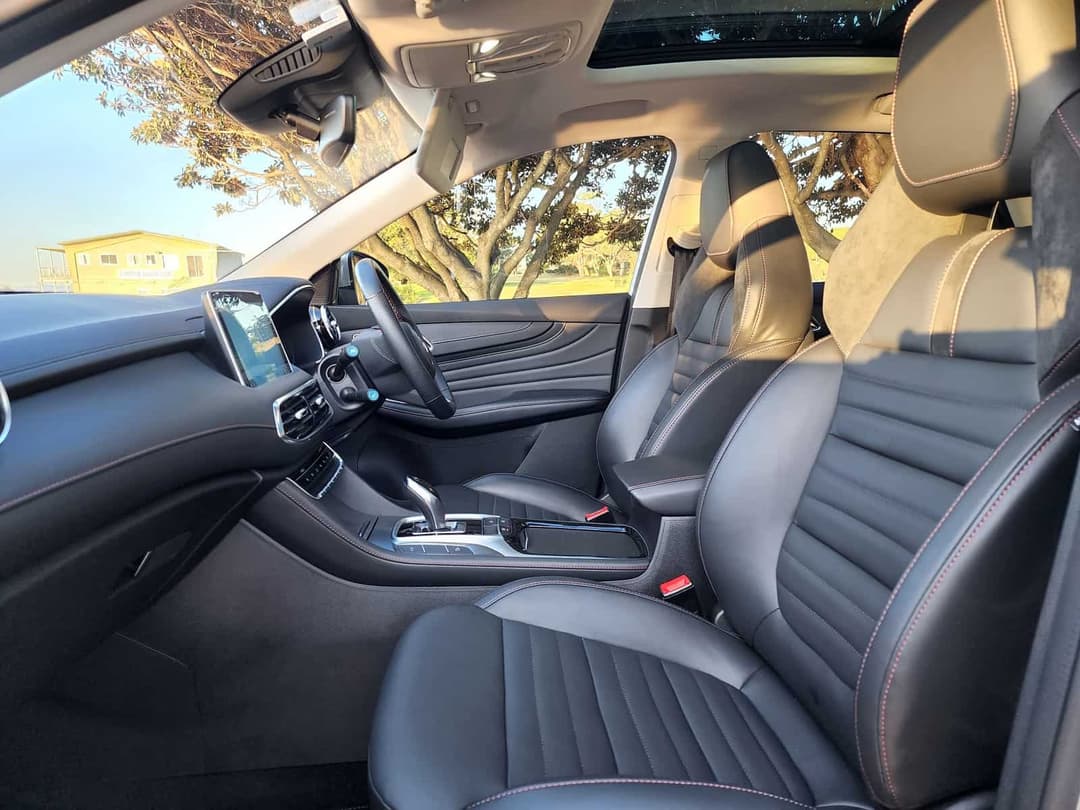
Aesthetically it looks and feels contemporary and fairly upmarket – think entry-level European luxury. The interior design reminded me of my 2015 Audi A3, in particular the circular design of the outer air conditioning vents and the red highlights throughout the cabin.
Like the exterior, there is nothing polarising about the design. It looks good and won’t offend. The interior is mainly dark grey with brushed aluminium throughout and mostly soft touch surfaces giving it a ‘premium feel’.The red stitching on the steering wheel and seats pays homage to the MG brand, while adding a bit of character to the interior.
Overall the cabin has a very open and airy feeling, thanks largely to the large panoramic sunroof that extends from the back to front. It is definitely one of the highlights of this top-spec Essence trim.
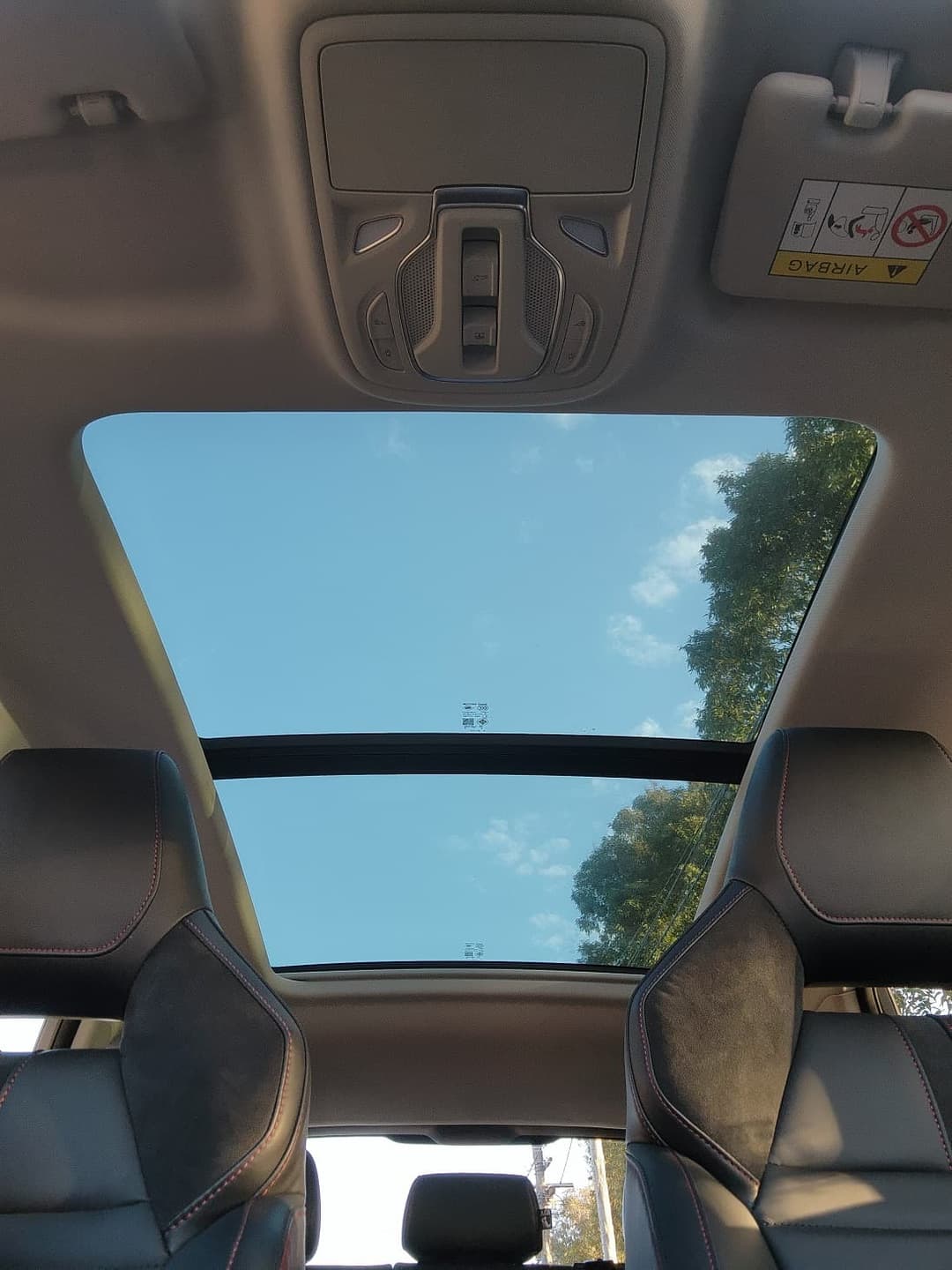
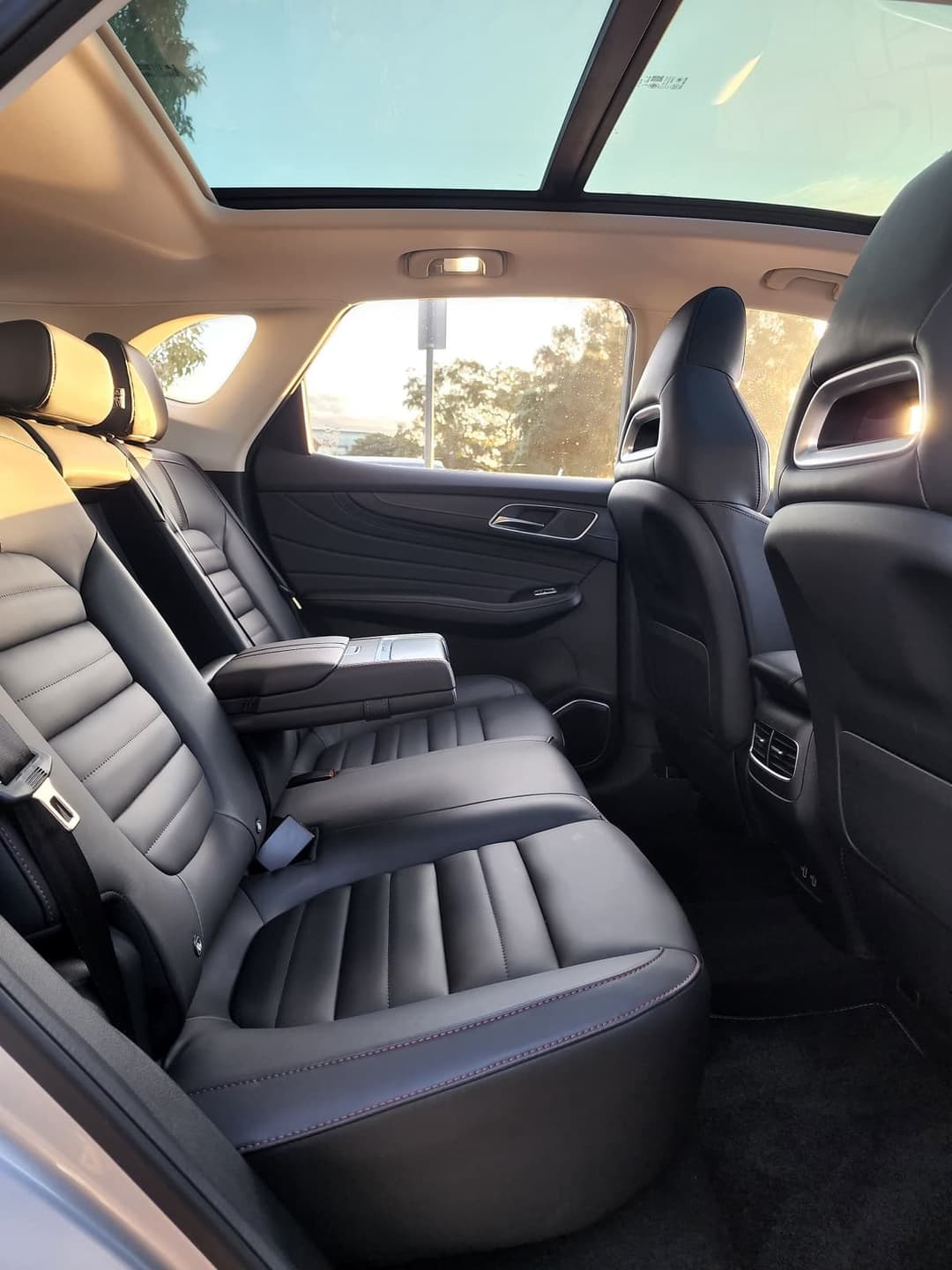
The driver’s position is a nice place to be. The sporty leather seats are comfortable with good adjustability thanks to the six-way electronic adjustment.
Practicality
The MG HS Plus EV has 451-litres of boot space or 1275-litres when the rear seats are folded down in a 60/40 configuration. This is on the smaller side for the medium SUV class, but was ample for my family’s day-to-day needs.
The seats are upholstered in dark leather and felt comfortable to sit in. There is plenty of space at the back; it feels similar in size to my fifth-generation Honda CR-V, which means there is more than enough head and legroom for pretty much everyone.
We were able to comfortably fit two child seats at the back using the two ISOFIX anchor points, although a small adult would struggle to fit in between. In terms of backseat amenities, my kids really liked the fold-down centre console, which features two drink holders and a little pop-open cubby which would be useful for storing bits and bobs.
Technology
The MG HS Plus EV Essence comes standard with a 10.1-inch infotainment system and 12.3-inch driver’s display. While it’s packed with features on paper, it also has some glaring weaknesses.
My biggest gripe with the MG HS Plus EV is how sluggish the infotainment system is. For example, it would take about half a second for the image to appear on screen from the reversing camera. This is not ideal when you’re doing three-point turns on a two-way street.
The in-built mapping system was also fairly sluggish at times making it frustrating to use. Fortunately, the car comes equipped with wired Android Auto and wired Apple Carplay, which made for a better navigation experience.
We believe an upgrade to the processor could fix a lot of these problems and hope this will be addressed in a future model refresh (nudge nudge MG technology department).
MG has added welcome little features to give the Essence trim a more upmarket feel, including multi-colour ambient lighting throughout the cabin and door projector lights on the outside.
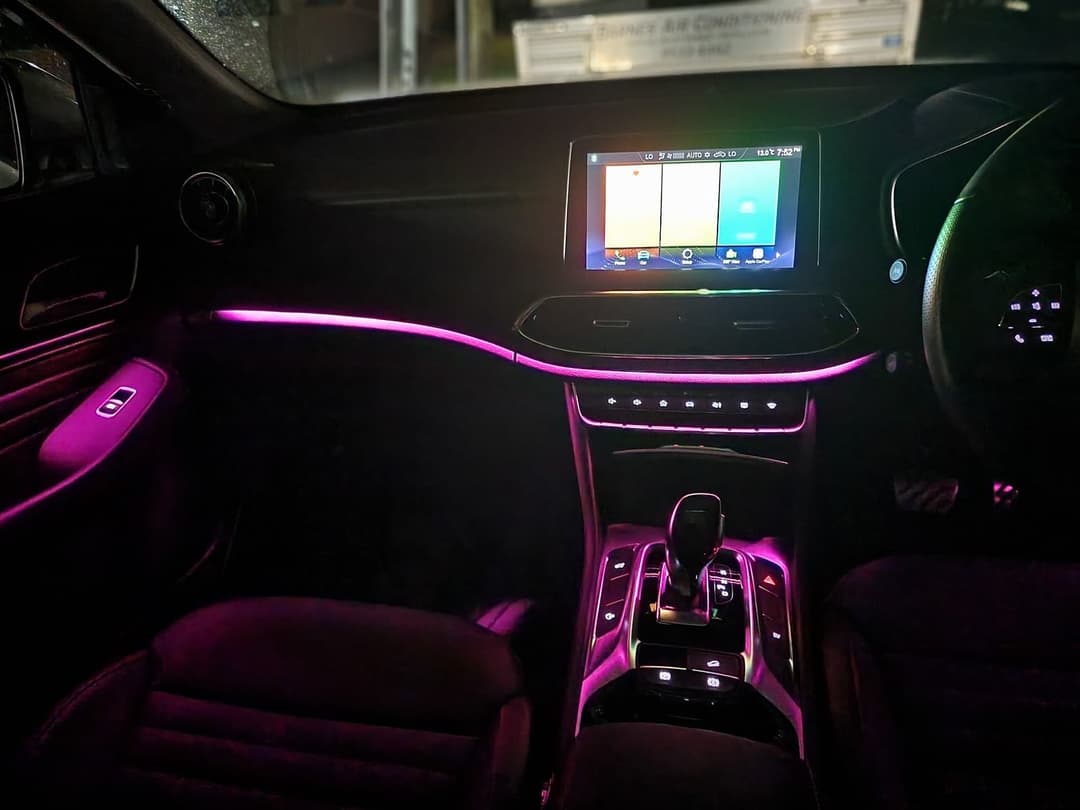
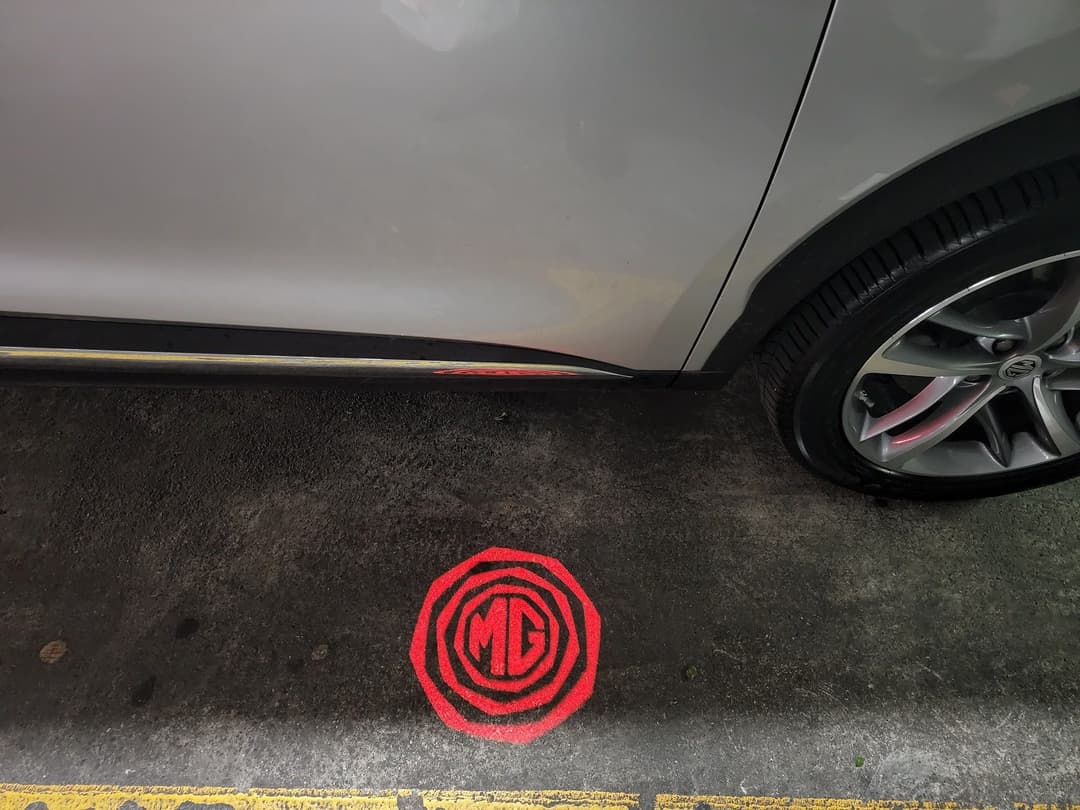
Safety assist
Despite the sluggish infotainment system, the SUV’s technology safety suite definitely had some strong points.
Dubbed ‘MG Pilot’, the driver assist technology is a cut above what normally comes with cars at this price range. Available on the Essence model only, the 360-degree camera was very useful in all parking situations. Notwithstanding the slight lag, the reversing camera worked very well with the parking sensors, making parking a breeze.
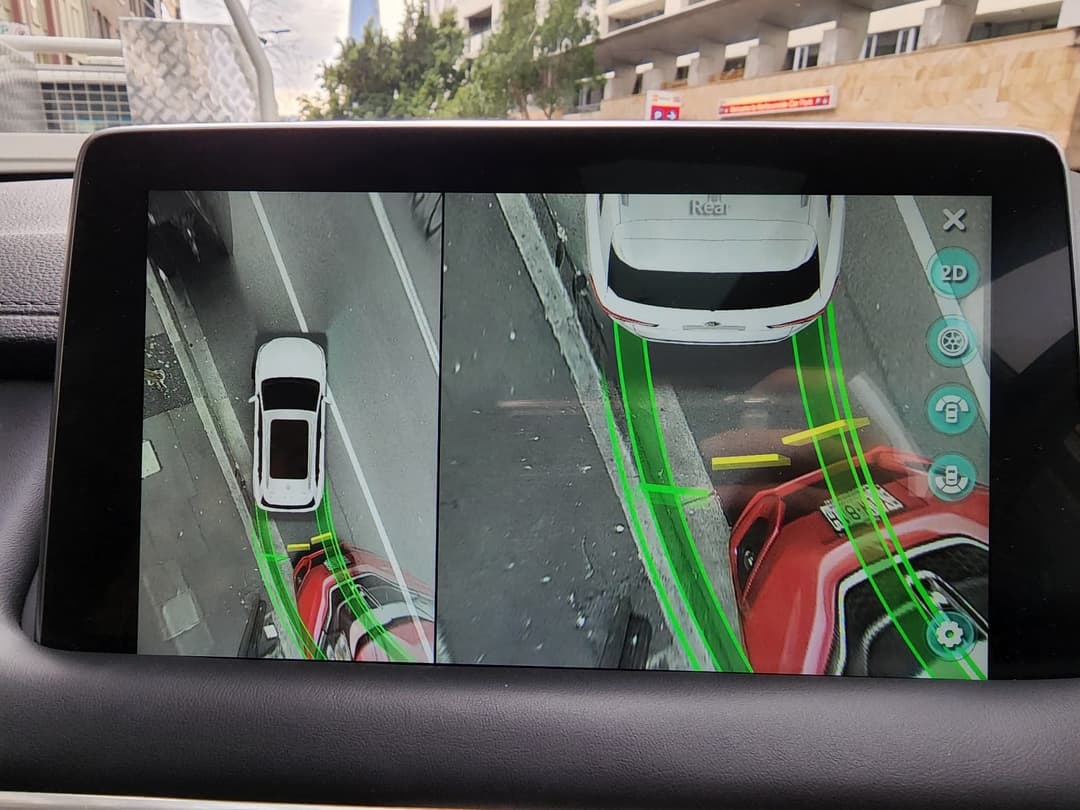
I did not find the plethora of driver assist features too intrusive. It provided just the right level of warnings without being annoying. The adaptive cruise control and lane keep assist functions worked a treat on the highway.
Range and charging
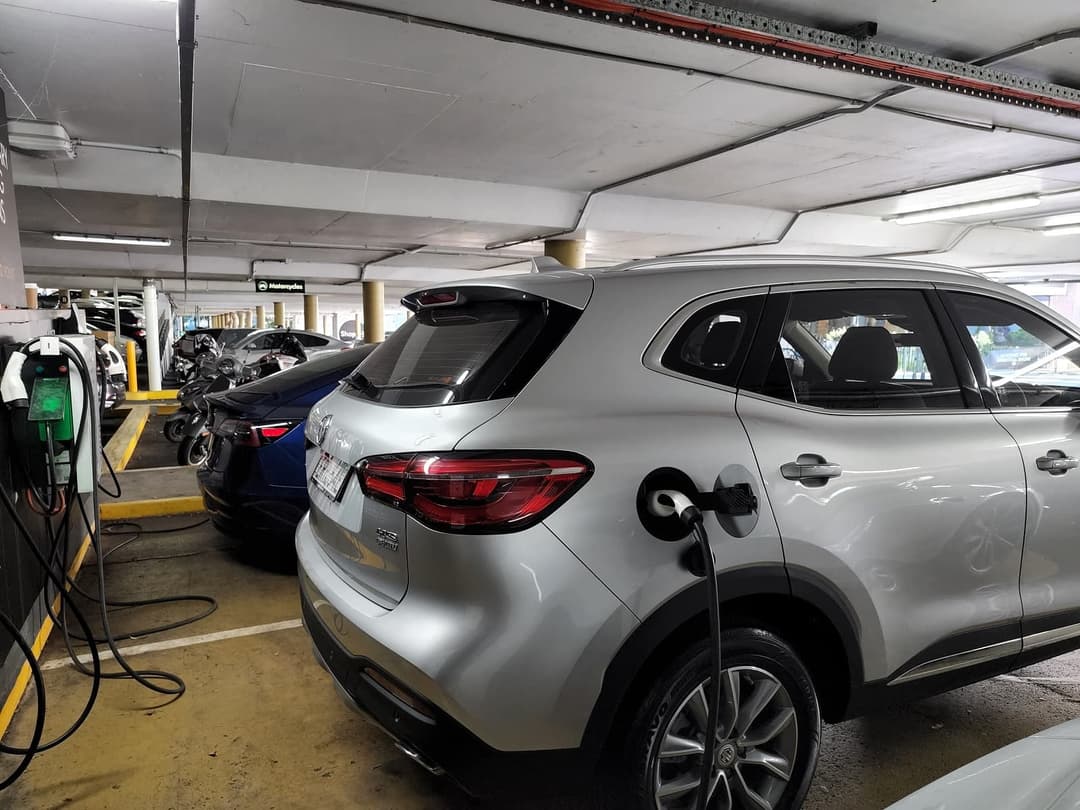
The HS Plus EV, which shares the same platform as the petrol HS, houses a 16.6kWh battery with a claimed electric range of 63km (NEDC) and claimed consumption of 1.7-litres/100km (ADR) using both the engine and electric motor in its automatic hybrid mode. We didn’t hit these numbers, however we did come reasonably close.
During our time with the HS Plus EV, our driving comprised a combination of low speed-inner city and motorway driving.
We were able to get 50km to 55km of pure-electric range, which is more than enough to cover the average daily distance (37km) driven in Australia.
The HS Plus EV is only capable of AC charging, so driver’s cannot take it to a fast public DC charger. We’ve listed below, the respective charge time based on different charging options.
The hybrid consumption we achieved is 7.6-litres/100km, which is notably higher than what you would get from the popular Toyota RAV4 Hybrid and in line with the more efficient pure petrol medium SUVs in its class. In this auto hybrid mode, it would lose efficiency by being a bit heavier than its petrol counterparts, but gains efficiency from the energy captured via regenerative braking.
Best use case for PHEVs and fuel savings
PHEVs carry much larger batteries, are heavier, and not designed to be driven like HEVs. The idea behind the electric range is that it is intended to cover most (if not all) of your daily distance.
Once the car is at home, you’ll charge it with a full battery ready to go for the next day.
The MG HS Plus EV’s range is 1.5 times the range of the average daily distance. It’s just enough range to cover my 50km round trip to Western Sydney a couple of times a week.
The petrol-hybrid mode is intended as a backup for those longer trips (greater than 50km) when you need it. PHEVs are not designed to be driven in the equivalent HEV mode all the time. In these situations, driver’s would be better off driving a pure HEV like the Toyota RAV4 Hybrid.
What if you don’t have access to home charging?
To make the most of a PHEV you must have access to regular charging at home, otherwise owner’s are losing out on the best things about PHEVs and using it for its worst attributes – the additional weight and inefficiencies that comes with two driving systems and a battery.
The circumstances in which a PHEV makes sense
If you are someone that drives less than 50km daily and have access to home charging, this is a great way to save on fuel.
The all-electric mode is the most economic, sustainable and enjoyable. Based on the electric range potential of the car, if you were to use the electric range on a daily basis (50km), you would pay the equivalent of $34 per week , compared to $61.3 in an equivalent petrol car. If you have the ability to purely charge from solar, this would be $6.1 (foregone export income) and all using 100 per cent clean energy. This is the main feature that makes PHEVs so attractive.
Driving
The HS Plus EV combines a 119kW/250Nm 1.5-litre turbo-charged petrol engine with a 90kW/230Nm electric motor. Energy is supplied to the electric motor from the 16.6kWh battery.
The maximum combined output of the system is 189kW of power and 370Nm torque, providing a brisk 0-100km/h time of 6.9 seconds. These performance figures are class-leading for the medium SUV category.
Driving in all-electric mode
The default driving mode is hybrid, which uses both the motor and the engine. To engage electric-only mode, drivers need to press the ‘EV button’ on the centre console near the gear shifter.
Driving in all-electric mode felt like any other EV. It was quiet, smooth with instant torque – and superior to any pure combustion engine vehicle. In this mode, only the electric motors drive the wheels. While its single motor outputs seem modest, the initial kick available from the instant torque provides more than enough thrust for darting around suburban streets or overtaking on highways.
The one annoying feature about EV mode is that it does not always engage instantly, as a ‘EV Mode Entry Not Support' message would appear.
MG has advised that the HS Plus EV “uses heat from the IC [internal combustion] engine to heat the car’s interior through a heater core and if there is a demand for heat, the vehicle will start and run the IC [internal combustion] engine to produce that heat”.
When the battery is depleted, the ‘Intelligent Hybrid Energy Management’ switches to hybrid mode which would have the engine and motors working together. According to MG, the system “adapts power output depending on the road conditions whilst actively learning the driver's individual driving style”.
Similar to other hybrids the battery is charged via the energy captured from the regenerative braking, but there’s no one pedal driving found in most BEVs.
Handling
In terms of the driving dynamics, it handled fairly well and is above average compared to its peers. The underfloor battery improves the centre of gravity and weight distribution, making the car feel planted when taking around corners.
Weighing in at 1755kg, it’s a tad heavier than your average SUV in this class, but it didn’t feel particularly heavy. Despite riding on the bigger 18-inch wheels, the HS plus EV absorbed bumps well, providing for a smooth driving experience around town and on the highway.
Our only complaint would be in hybrid mode, the engine can sound coarse at times. Driving in EV-only mode is most ideal. Overall, I enjoyed the driving experience for a practical medium-sized SUV.
Verdict
MG is one of the fastest growing car brands in Australia. After my time with the MG HS Plus EV, it now makes sense why more MG’s are popping around our neighbourhood (across all ‘fuel’ types). The word about the great value they provide is certainly catching on.
One of the main reasons why you might be looking at the MG HS Plus EV is that you’re interested in a BEV, but worried about the charging options for longer trips. If this is your situation – and you’ve got access to a regular charging socket at home – then we’d recommend this as an alternative to a BEV or any ICE equivalent. The potential to reduce your weekly fuel bill by 50 percent in all-electric mode is certainly a compelling reason.
If you don’t have access to regular charging, we wouldn’t recommend a PHEV as you’d be carrying around the extra weight with seldom the option to use pure electric mode and all the benefits it offers. If you want fuel efficiency without the need to plug-in, consider other HEVs on offer in the market.
As the most affordable PHEV in Australia at $51,690 drive-away in flagship Essence trim, it represents strong value for the package on offer. The MG HS Plus EV provides a semi-premium practical family SUV, which is actually cheaper than some of its top-spec competitors like the Mazda CX-5 Akera, RAV4 Edge Hybrid, and even the entry-level Mitsubishi Outlander PHEV ES.
About the author
Stay up to date with the latest EV news
- Get the latest news and update
- New EV model releases
- Get money savings-deal







